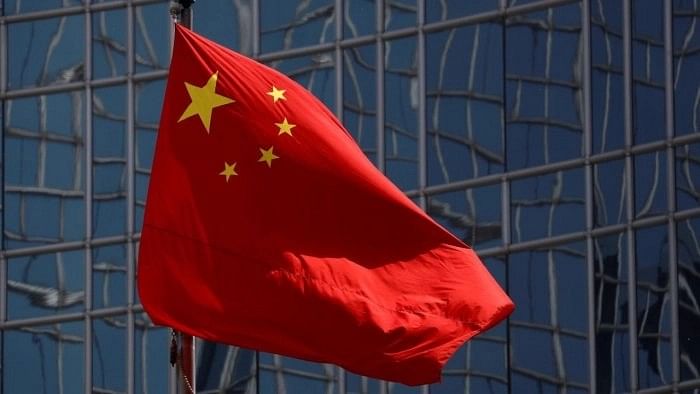
The flag of the People's Republic of China.
Credit: Reuters Photo
The idea of an India-Middle East-Europe economic corridor (IMEC) has been in the air for the last two years, as the U2I2 quartet came together. It acquired an urgency in recent months as the changing geopolitics of the Middle East (India’s ‘West Asia’) saw China occupying space in a region that had for long been the US’ playing ground. The Saudi-Iran peace pact in March was a warning bell that rang loud. Two months later, the National Security Advisers of India, the UAE and the US jointly called on Saudi crown prince Mohammed bin Salman in Riyadh to discuss an infrastructure project to link West Asia with Indian ports. It was on the back of these developments that on the sidelines of the G-20 summit in New Delhi, President Joe Biden and Prime Minister Narendra Modi were able to announce the IMEC, which will be driven by the G-7 countries’ Partnership for Global Infrastructure and Investment (PGII). The project will comprise an eastern corridor connecting India to the Gulf region and a northern corridor connecting the Gulf region to Europe. It will include a railway and ship-rail transit network and road transport routes. An MoU on IMEC was signed by India, the US, Saudi Arabia, UAE, European Union, Italy, France and Germany. In geopolitical terms, it is an obvious rival to China's Belt and Road Initiative.
The UAE is the gateway to West Asia. Thus, the ground has already been paved with the signing last year of the India-UAE Comprehensive Economic Partnership. Rail lines between Saudi and the UAE, and Saudi and Jordan are already in place, and more are being built. Alongside the railway lines, the project envisages cables for electricity and digital connectivity, as well as pipelines for clean hydrogen export. The corridor is expected to secure regional supply chains, enhance trade efficiencies, reduce costs, generate jobs, and lower greenhouse gas emissions.
As with all projects billed as “transformative”, money is the big “if”. The PGII was born out of the realisation that China's global footprint was growing because it fulfilled a felt need for infrastructure development in the developing world. PGII, launched in 2021, was supposed to raise $600 bn to invest in infrastructure-building in Africa and Asia, but so far, it has not yet attracted the megabucks the vision requires. The war in Ukraine has changed Europe's economic priorities. India's own record in infrastructure-building abroad is not great. European interest in the corridor will depend on what kind of market access Delhi is prepared to offer. India will also need a highly skilled labour force and a big leap in manufacturing to benefit from IMEC.